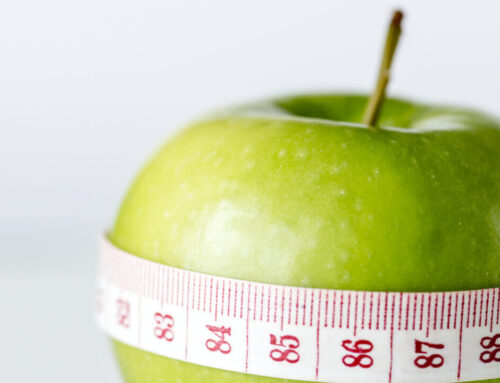The timing of macronutrients in reference to healthy, exercising adults and in particular highly trained individuals on exercise performance and body composition is a topic many nutritionists confront head on every day. The notion of downing a protein drink before hitting the showers was, and still is, a ritual many gym lovers carry out. But is this window of muscle-building opportunity important for everyone?
When we get geeky with discussing nutrient timing, the planning and eating of whole foods, fortified foods, and dietary supplements are a key strategy. The timing of energy intake and the ratio of certain ingested macronutrients may enhance recovery and tissue repair, increase muscle protein synthesis (MPS), and improve energy and mood states following high-volume or intense exercise. Meal patterns, meal timing, and the distribution of protein, meal frequency and night time eating, in not only athletes, but the non-athletic or specialized clinical populations may also derive benefit from these strategies. To get a proper understanding of it all, it’s a smart move to break down how the timing affects each of your key macronutrients.
Perfectly timed carbohydrates
Moderate to high-intensity activities as well as resistance-based workouts rely heavily upon carbohydrate as a fuel source, coming mainly from; endogenous (muscles and liver) glycogen stores are of critical importance. It is well known thanks to research in the Journal of Applied Physiology that your glycogen stores are limited and can operate as your predominant source of fuel for up to a few hours during moderate to high-intensity aerobic exercise.
During resistance training, performing anywhere between 4-6 sets of 12RM leg extension exercises, has been shown to reduce glycogen stores in your vastus lateralis (one of the four muscles that make up your quads) by 39%, says another paper in the Journal of Applied Physiology. That doesn’t mean you can train for as long as you want, there is an upper cap for the amount of energy you store. It’s important to realise that as your glycogen levels reduce through exercise, the ability to maintain exercise intensity and work output also decreases while rates of tissue breakdown increase, says a paper in Medicine and Science in Sports and Exercise.
A simple guideline to maximize your glycogen stores is to ingest appropriate amounts of carbohydrate relative to the intensity and volume of training. Research in the Journal of Applied Physiology found that the recommended daily intakes of carbohydrate for athletes are commonly reported to be 5–12g/kg/day, with the higher end of this range (8–10g/kg/day) reserved for athletes that are training at moderate to high intensities (more than 12 hours per week).
Go easy on the bowl of linguine because it’s important to know that most of the recommendations for carbohydrate intake are based on the needs of endurance athletes, and in particular, male endurance athletes. In fact, studies have indicated that trained female athletes do not oxidize fat and carbohydrate at the same rates as males and may actually deplete endogenous glycogen stores to different degrees. Those involved or competing in strength-power sports need a lower intake of carbohydrate. Instead, they should focus more on shifting their carbohydrate intake in the days leading up to competition.
Program your protein
The buzzword in the fitness world, but how does it really hold up? Although resistance exercise alone is inherently anabolic – increasing muscle protein synthesis (MPS), you do require protein and its constituent amino acids to adequately repair skeletal muscle cells in response to exercise.
Although lifting weights alone is bound to increase your MPS, breakdown is correspondingly increased, thus requiring nutrients such as amino acids to realise a positive protein balance. Post-exercise, the muscle cell is primed for nutrient intake – providing specific amino acids (particularly leucine) in sufficient quantity are available during the post-workout window.
The majority of studies that have been done have had some form of protein or amino acid ingestion before your bouts of resistance exercise, and repeated with an identical dose during the post-exercise period as well, or the window of opportunity. So, you know protein is essential for tissue growth, body size and goals, but you will still need to factor in the variables that come from timing and distribution.
The general consensus of protein intake is between 1.5-2.2g taken daily per kilogram of bodyweight for exercising individuals, and numerous studies have been done on higher amounts with no health effects. The timing of protein servings has been shown to be more effective around 4-5 hours apart to maximally stimulate MPS. That translates to better results from every single rep you pump.
Tuning your meal to the right frequency
A paper in the journal Sports Medicine clearly illustrated that upon ingestion of a meal containing protein and/or amino acids, serum levels of amino acids as well as MPS rates will rise and stay elevated for three to five hours depending on bolus size. What’s more, a 2005 study in the American Journal of Clinical Nutrition required individuals over a 14- day period to eat either a regular, consistent pattern of six daily meals or eat anywhere from three to nine meals per day.
The group using the irregular meal pattern was found to result in increased levels of appetite, and hunger. Eating at odd or irregular times each day could lead you to question if the energy provided in each meal was inadequate, or if the energy content of each meal could have been better matched to limit these feelings while still promoting weight loss. So if you want to stay full, pick time slots to eat at and you’ll be better prepared to manage your hunger.
The final word
How does all this information hold up against the difficulties of the normal world? If you are an athlete, it’s pretty safe to say you should be paying real importance to the amounts of each macronutrient. Equally crucial is the timing and feeding window around your workouts, especially if you train twice per day where refueling quickly will always be a matter of extreme urgency. For athletes who train twice a day, the focus should be on total intake of calories and macronutrients, along with pre- and post-workout feeding windows, carbohydrate type and recovery for the next session.
Athletes who train once per day, should remain focused on total calorie intake and macronutrients with less importance on the type of carbohydrates and urgency of the post workout window. That being said, it won’t do any harm to keep the feeding window within 1-2 hours post workout. If you fall into the non-athletic population, and strength or body composition is your only goal, the significance of nutrient timing starts to become less important, where a matter of urgency relies upon total food intake and consistency.
So if you skip a meal or eat one too many meals then it’s the big picture of “calories in versus calories out” over the long term that’ll make the most difference to achieving your goals.
Your expert: Simon Herbert – a sports nutritionist and PT, passionate about changing people’s perceptions about health.







